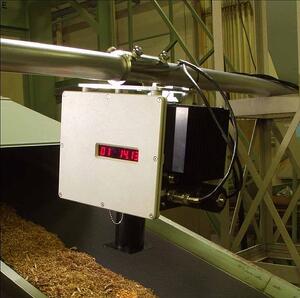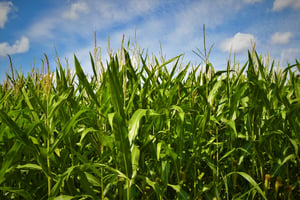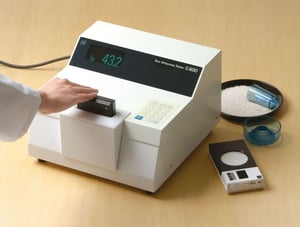 Rice is one of the leading food sources across the entire globe. In fact, more than 3.5 billion people rely on rice for 20% or more of their daily caloric intake.
Rice is one of the leading food sources across the entire globe. In fact, more than 3.5 billion people rely on rice for 20% or more of their daily caloric intake.
Because of this, rice is grown, harvested, stored, and distributed throughout the world. As a result of its widespread consumption, it’s vital that each crop is successfully harvested and makes its way efficiently from the field to the table.
There are many tools you can use at each step of harvesting and processing so you can ensure the final product is safe, delicious, and of the highest caliber. Here are a few tools that monitor rice for moisture levels and quality as it makes its journey from the field to our kitchens:
Testing in the Field
Harvesting rice becomes problematic if it happens too soon or too late, so it’s key to start the product off successfully by testing each rice crop with a Riceter. This portable grain moisture meter, which has truly revolutionized the rice industry, is specifically calibrated to test white rice to determine whether or not it is ready for harvest, making it easier to read levels with fewer steps.
In addition to polished (white) rice, the Riceter can also read levels of moisture in brown rice, barley, wheat, mung bean, black pepper, and white pepper. Different versions of the Riceter have different factory calibrations, insuring that values measured worldwide are traceable to one standard method. The Riceter is lightweight, runs on 4 “AA” batteries, and can go anywhere, be it the humid rice paddy or the dry desert.
But perhaps the best feature of the Riceter is that accurate measurements of moisture levels in rice (and the other grains) can be taken without needing to process a sample by husking and grinding the grains, which is a prerequisite in many competing models. This saves valuable time, while still providing accurate test results.
Why is a Riceter invaluable to the harvesting process? If rice is harvested while it is still too wet, the crop will need to be dried, which is both costly and time-consuming. If the rice is too dry? Farmers sell grains based on weight, and so they stand to lose a large amount of money if the crop is too dry and therefore weighs less than it should. A small mistake in this area is the difference between a successful rice harvest (and business) and a failure.
Larger processing facilities and growers use our unique PQ520 single kernel moisture meter (add link) to optimize the harvest. As with the Riceter, several factory calibrations are included with the instrument (link to table). A sample of the rice is poured into the PQ520. Each kernel is ground and individually measured for moisture. A histogram shows both the average moisture value as well as the standard deviation of the sample. Harvest is optimized when that deviation is minimized, meaning, the average value of the rice is very close to the moisture value of all individual kernels. In this case, even Paddy Rice (unhusked) can be tested.
Rice Husker: When testing the moisture levels of brown rice (with the RIceter) you will also need to use a rice husker like the TR250 (electrical) or the TR130 (manual). You use a rice husker before using a Riceter in order to remove the thicker outer husk of brown rice and accurately determine the moisture levels, or to prepare the grain for research and development and other tests..
Evaluating the Quality
The next step in evaluating the quality of the rice is to test the color. According to the Institute for Rice Research International, the color of rice is one of the top 10 factors in evaluating the quality of rice. A rice colorimeter, or whiteness tester, is used to evaluate the purity of the rice, as well as its progress through the milling process.
This is an important part of ensuring that you are processing a high-quality product, or as a potential buyer, that you are purchasing a high-quality product. So it’s necessary to use a rice whiteness tester like the C600 model. Being able to accurately and quickly measure whiteness helps rice mills optimize yield. As they "polish" the rice, they are removing material. If they "over polish", they have removed more solid material, affecting their yields and reducing profitability.
You can also use an Advanced Rice Quality Meter like the RN300, which shines light through individual grains of brown or polished rice to determine the color, quality, and transparency. The inspector displays percentages of cracked, discolored, immature, or other low-quality grains, so you can be sure your rice is of the highest quality.
Monitoring Moisture Levels
By this point, your rice should be harvested, dried, and tested for quality. The rice will either be stored for future use, or packaged and distributed. The issue with this is that rice tends to pull moisture from the air and environment around it. For this reason, moisture levels need to be carefully monitored. Too much moisture and the rice will spoil.
To maintain proper moisture levels in the rice during storage, you will want to use an agricultural grain and seed moisture meter and test levels on a regular basis. Long-term storage of rice or grain requires careful monitoring so that it doesn’t spoil if moisture levels are too high, that way it is stored safely until it’s ready for packaging and distribution.
Once the rice is packaged, it will travel to markets and grocery stores, but before it leaves, moisture levels should be tested in the packaging. Extra moisture in the packaging can also spoil the rice, so a universal moisture meter or an instant paper moisture meter are both excellent tools to test moisture levels in the packaging.
Once safely packaged and transported to supermarkets and stores, rice is ready for purchase and ready to make its way to our kitchen table. You can rely on Kett tools to monitor rice at every step of its journey from harvest to table. Ready to talk more about how we can help you with your part of its journey? Let’s talk today!



